如何快速升级 Cocos Shader 版本,以简易水shader为例
白
复制 文末的
1. 新建着色器(Effect),
2. 新建材质
3. 在场景中创建平面,并使用
背景
讲述如何 将一份 3.0.0 版本的水shader 升级至 Cocos Creator 3.6 。希望对大家有所帮助。
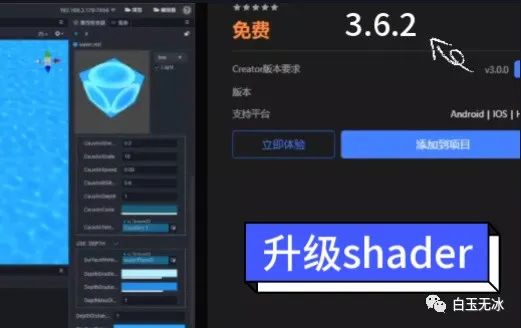
环境
Cocos Creator 3.6.2
效果
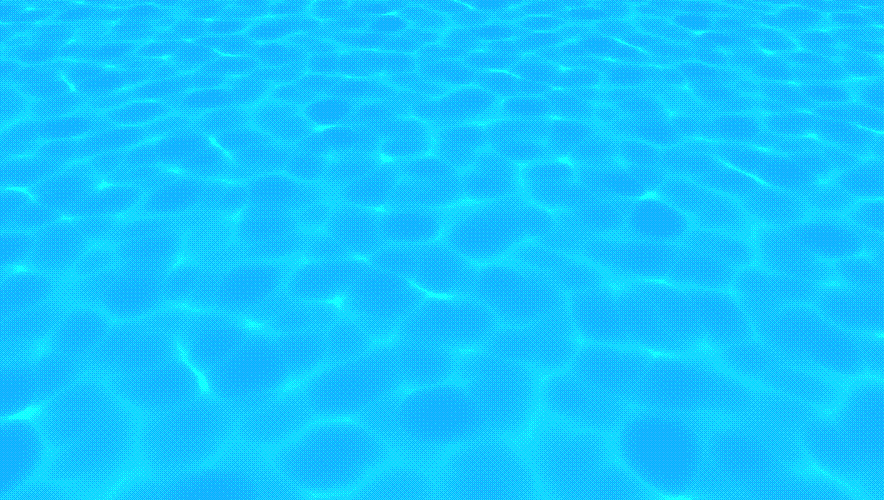
此处是鱼🐟,介绍如何使用
在资源管理器中新建着色器(Effect)
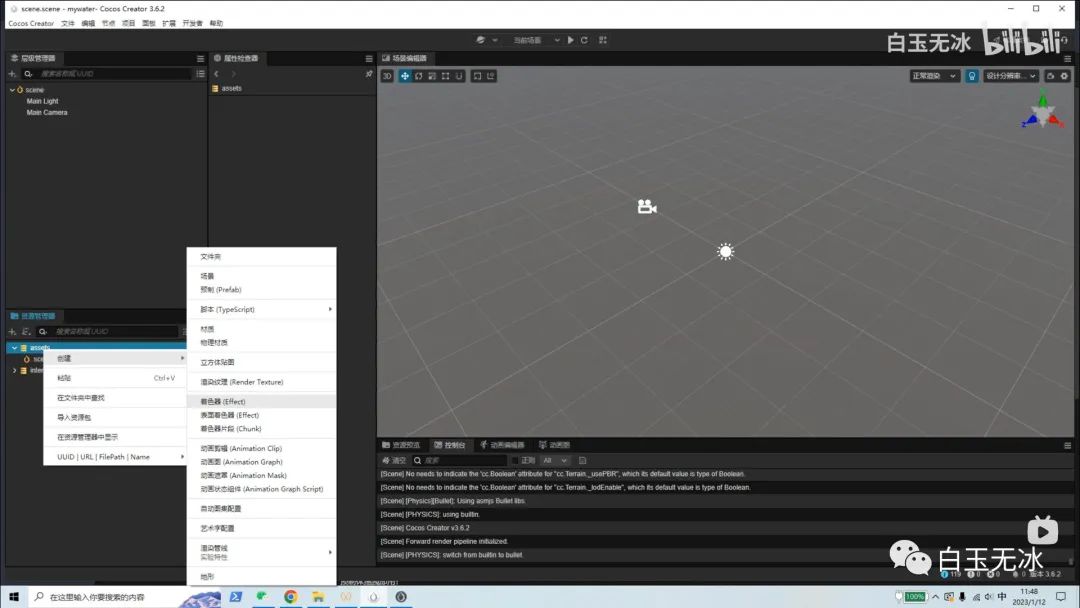
复制 文末的 mywater.effect 代码至当前文件
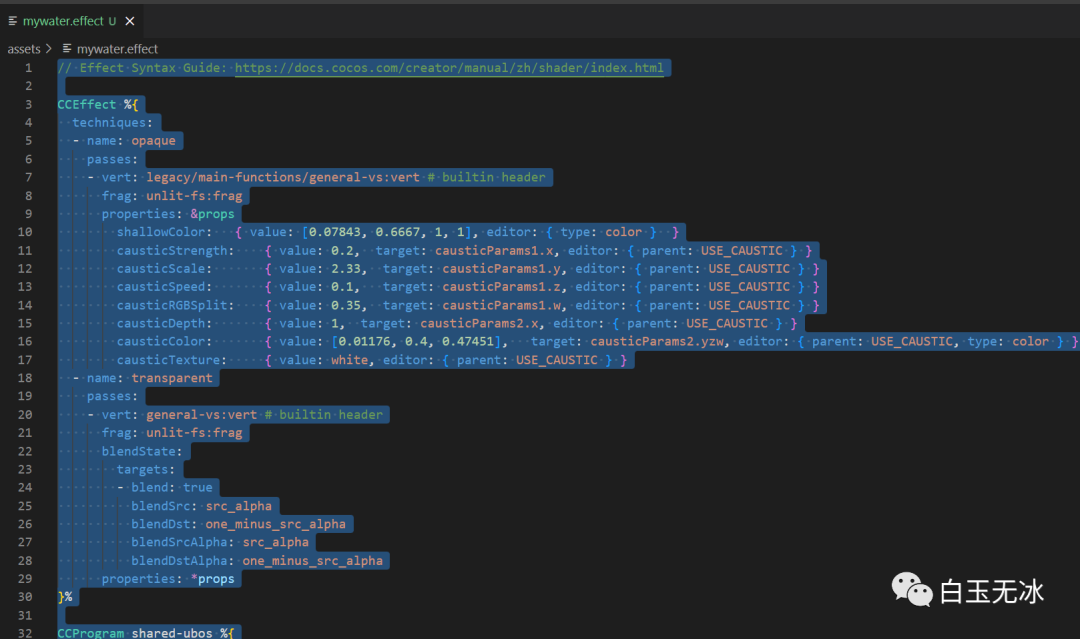
在资源管理器中新建材质
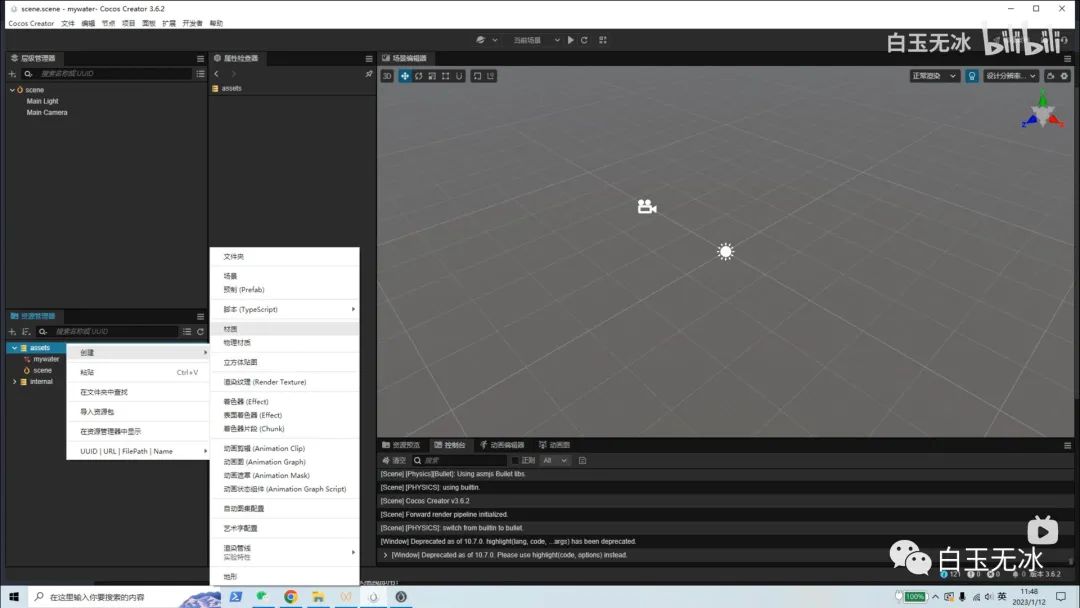
选择材质的着色器

在场景中创建平面
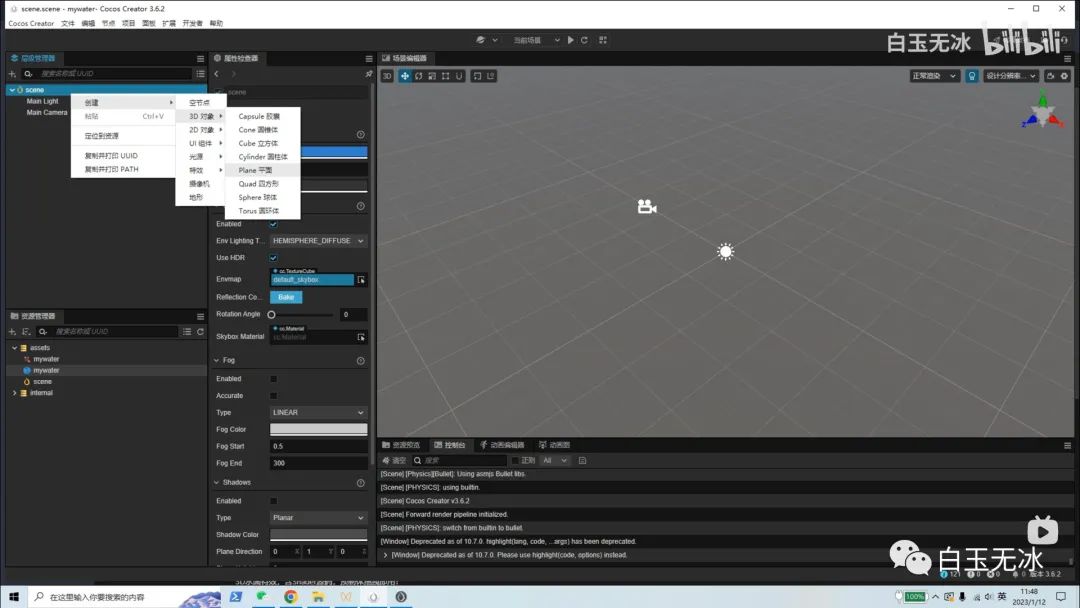
让平面使用水的材质
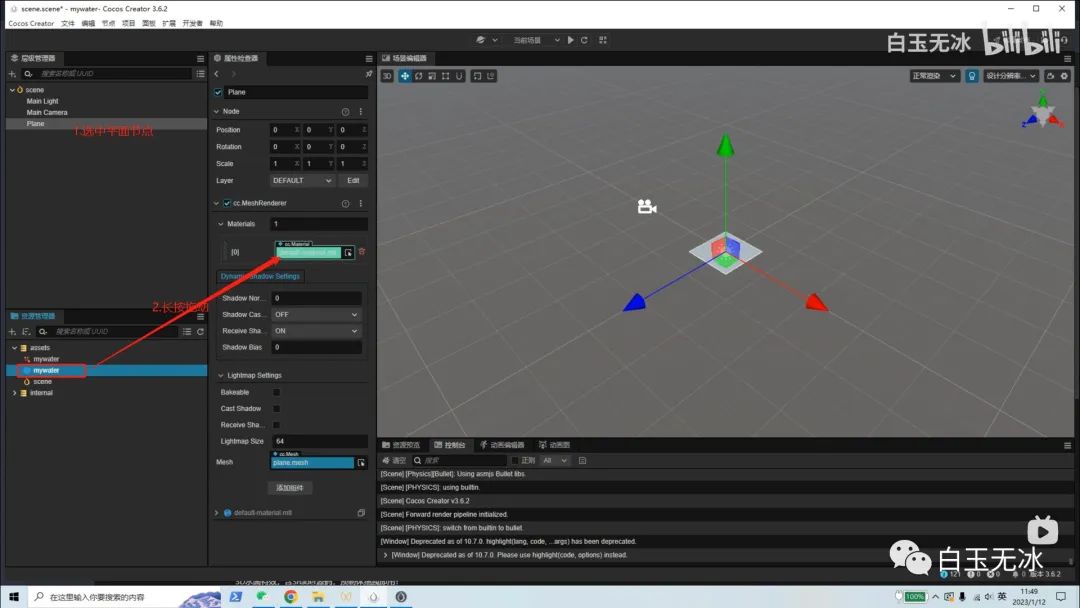
为材质上贴图

调整材质参数
可以根据预览效果调整参数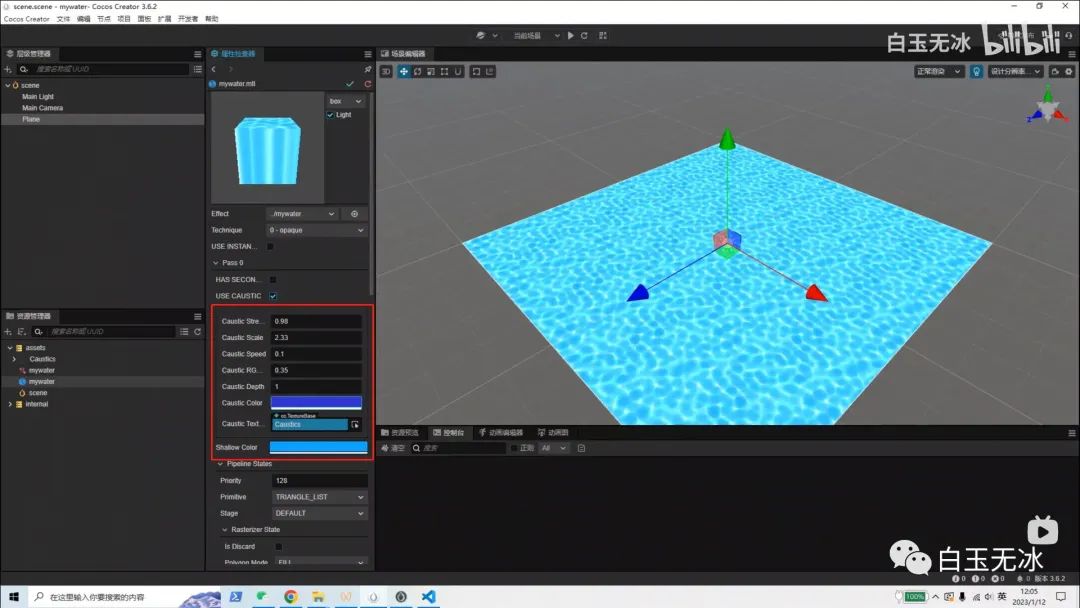
此处是渔,介绍如何快速升级
https://www.bilibili.com/video/BV1WY4y1f7mS
前置准备
参考前面的步骤准备以下几个点:
1. 新建着色器(Effect), mywater.effect
2. 新建材质 mywater.mtl ,并使用 mywater.effect 材质

3. 在场景中创建平面,并使用mywater.mtl材质

4.将参考的水放在工程中
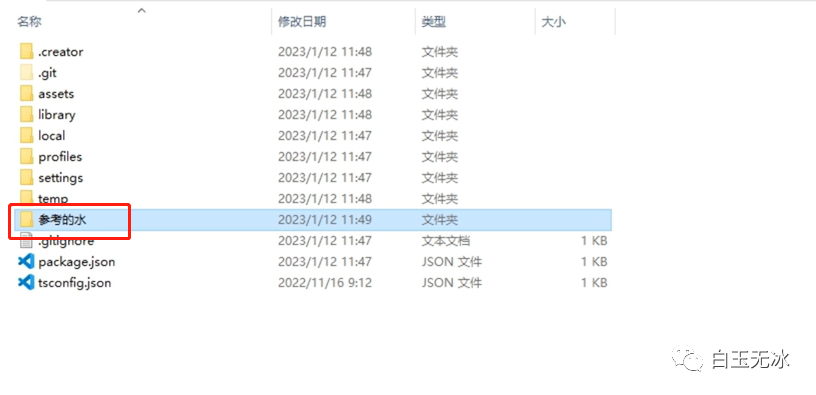
确定入口
打开两份着色器代码,片元着色器的入口在 frag 变量下
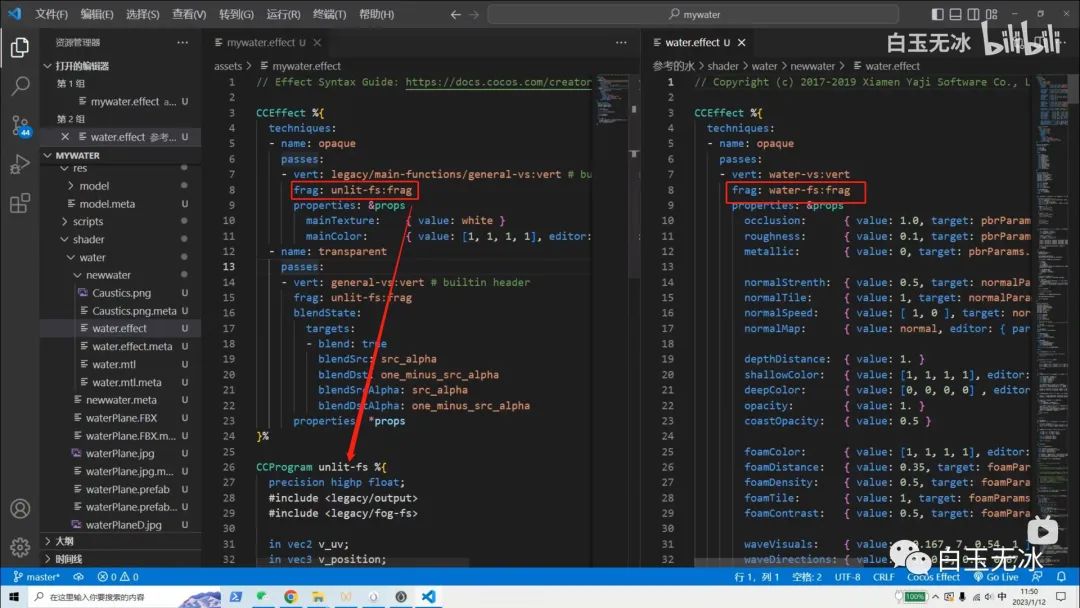
入口在 water-fs:frag
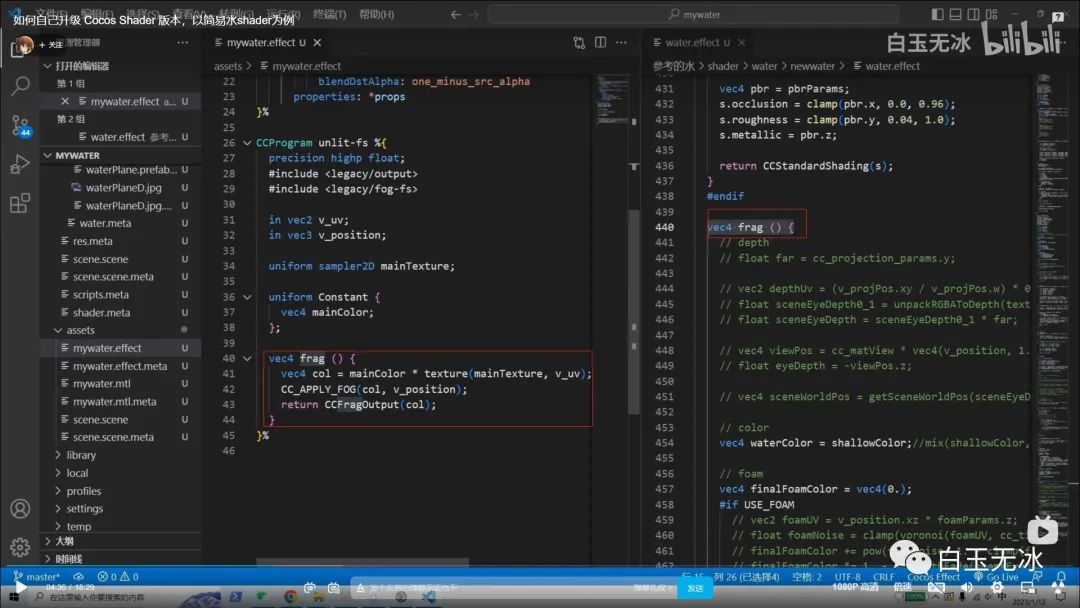
从后往前抄
返回颜色
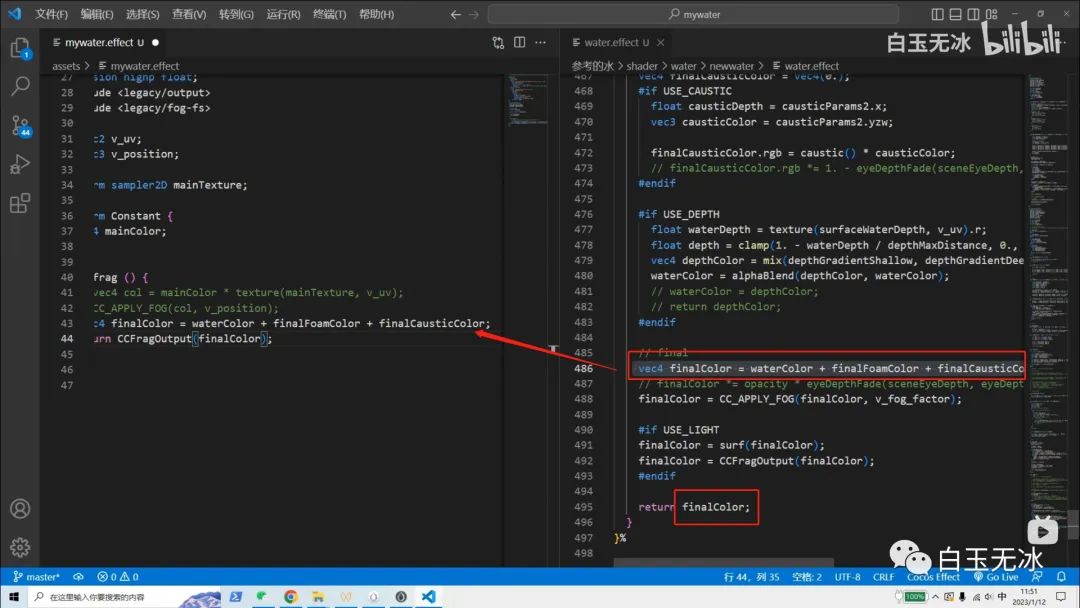
将每个变量都移植过来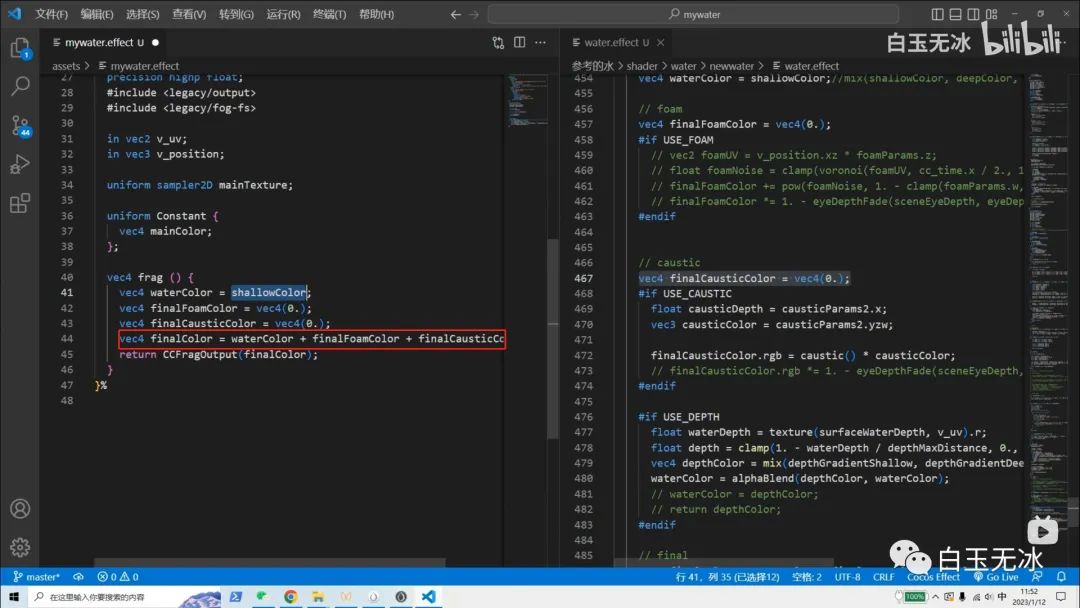
全局变量
拷贝 属性检查器 面板参数 properties

拷贝UBO。引擎不支持离散声明的 uniform 变量,必须使用 UBO 并保持内存对齐,以避免 implicit padding。

拷贝引用UBO
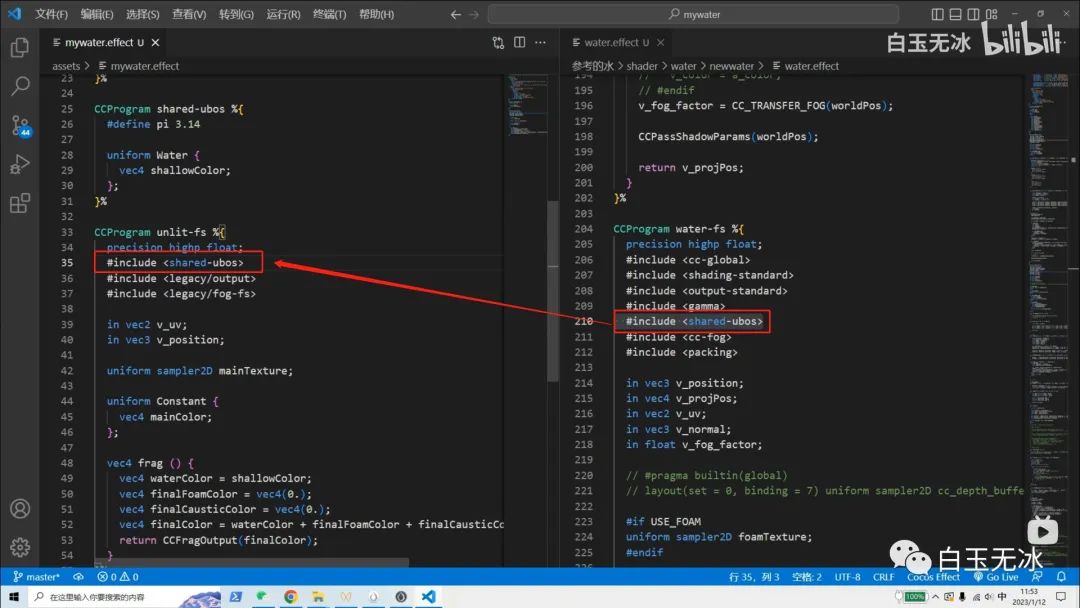
函数
拷贝颜色计算的部分

拷贝相关的全局变量
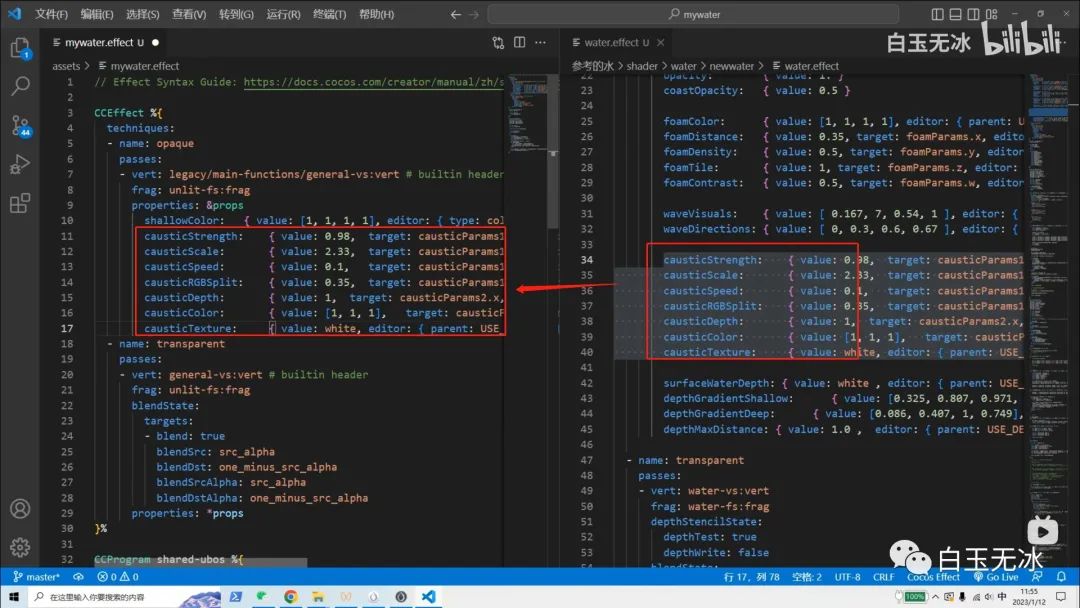
拷贝UBO
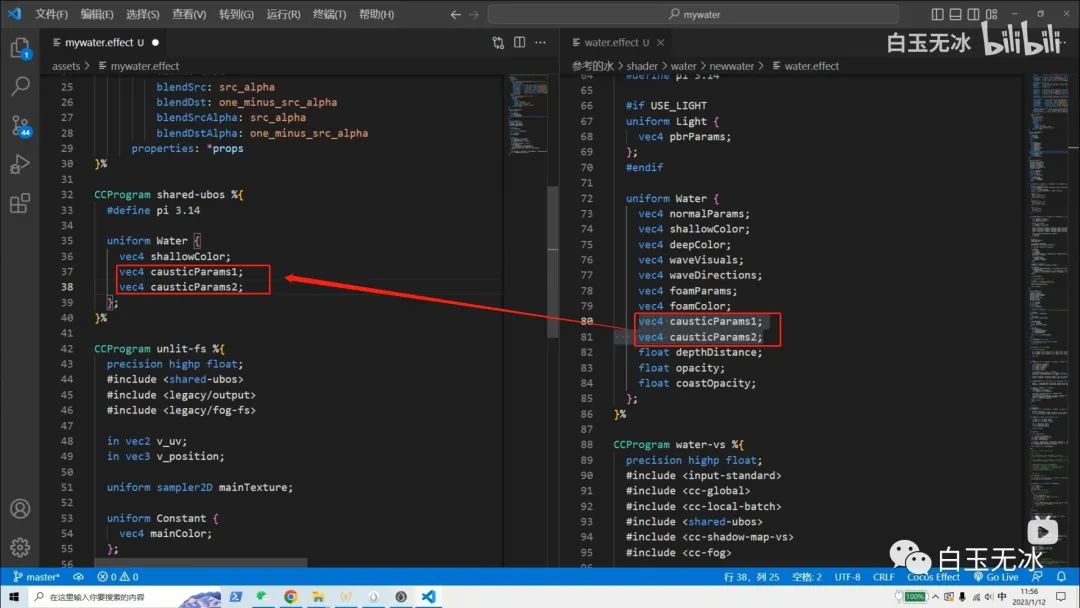
拷贝纹理声明 causticTexture
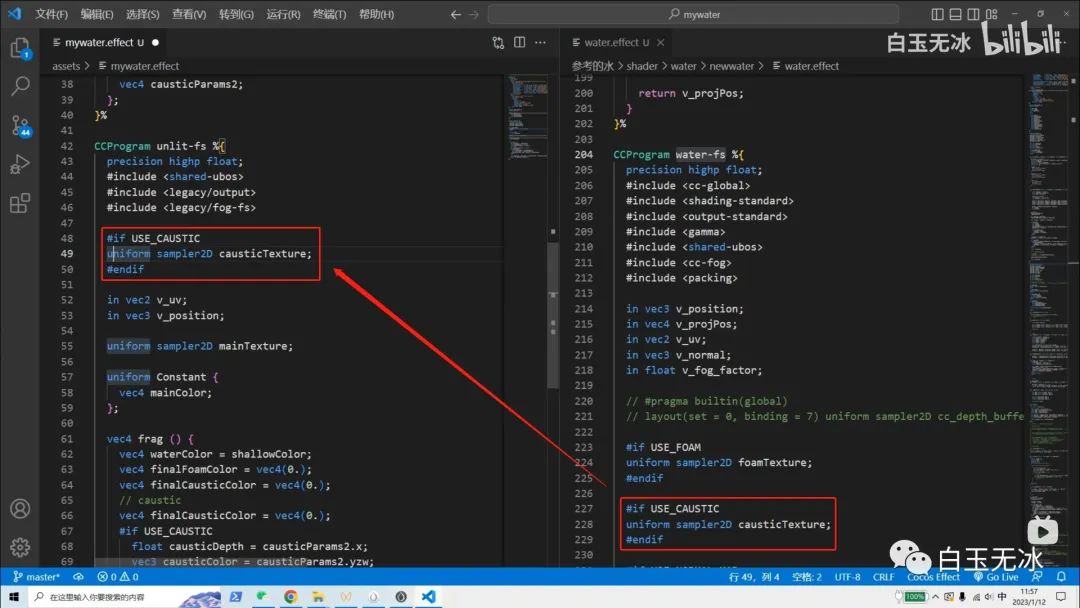
拷贝函数
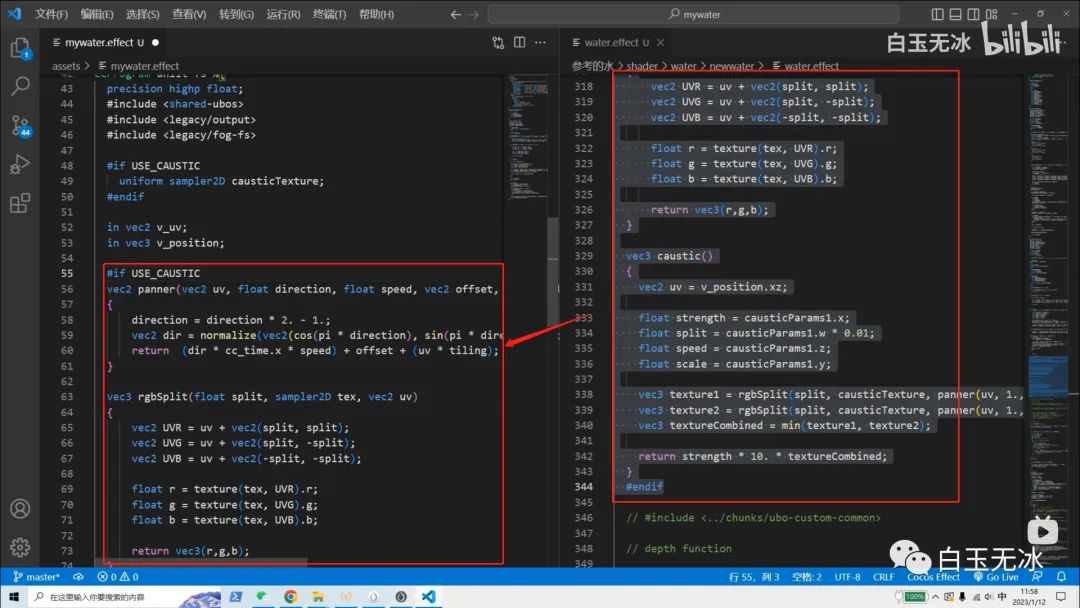
材质参数
在参考材质中搜索对应的纹理,找到使用的纹理文件
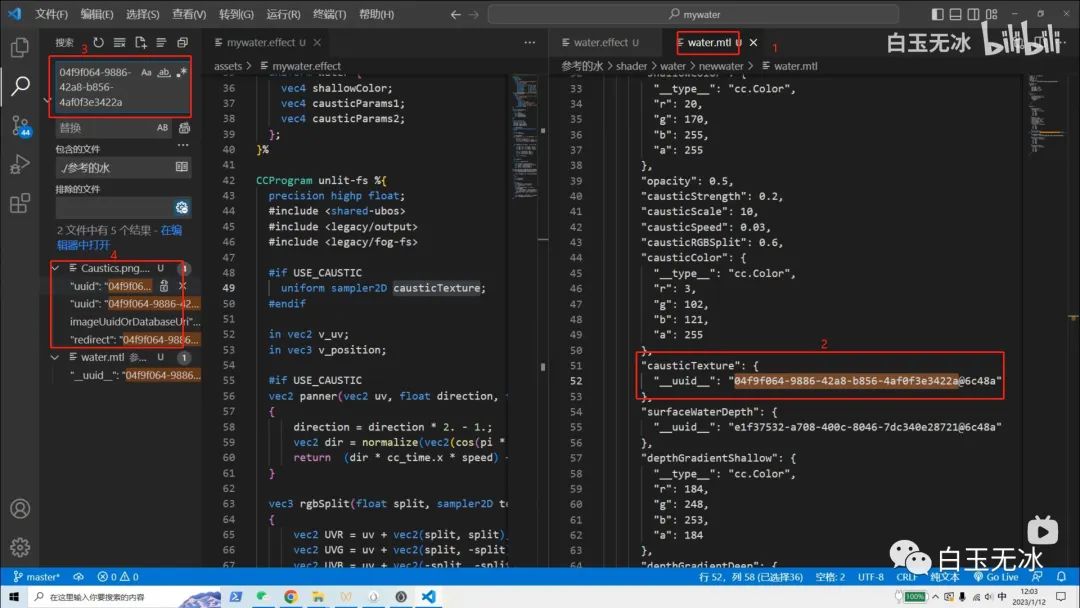
拖入贴图

为材质上贴图

其他参数的拷贝
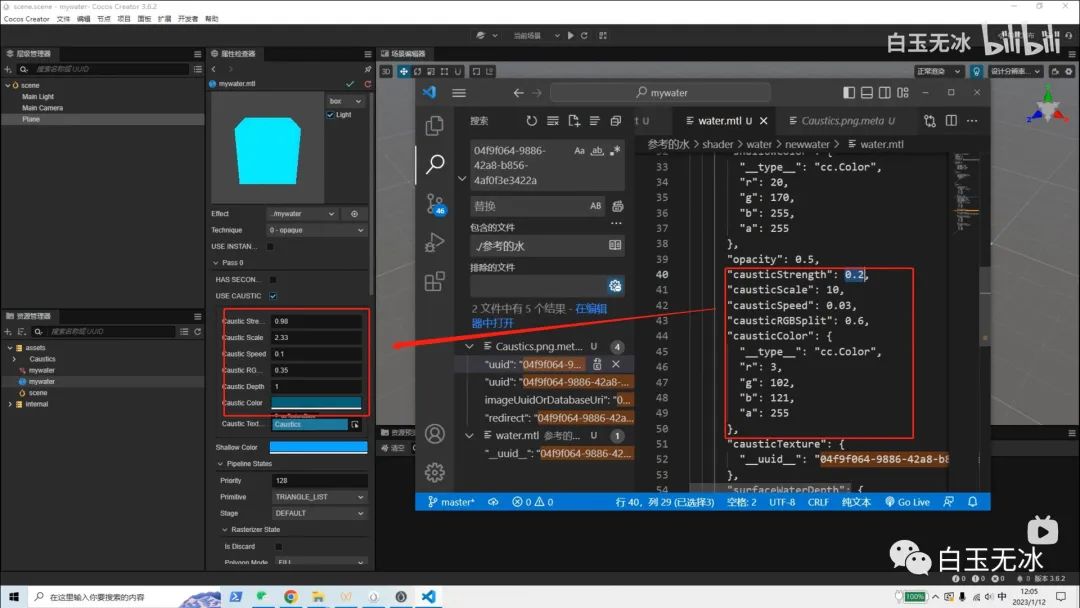
效果

此处是相关资源资料
贴图 Caustics
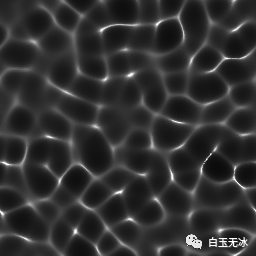
mywater.effect
// Effect Syntax Guide: https://docs.cocos.com/creator/manual/zh/shader/index.html
CCEffect %{
techniques:
- name: opaque
passes:
- vert: legacy/main-functions/general-vs:vert # builtin header
frag: unlit-fs:frag
properties: &props
shallowColor: { value: [0.07843, 0.6667, 1, 1], editor: { type: color } }
causticStrength: { value: 0.2, target: causticParams1.x, editor: { parent: USE_CAUSTIC } }
causticScale: { value: 2.33, target: causticParams1.y, editor: { parent: USE_CAUSTIC } }
causticSpeed: { value: 0.1, target: causticParams1.z, editor: { parent: USE_CAUSTIC } }
causticRGBSplit: { value: 0.35, target: causticParams1.w, editor: { parent: USE_CAUSTIC } }
causticDepth: { value: 1, target: causticParams2.x, editor: { parent: USE_CAUSTIC } }
causticColor: { value: [0.01176, 0.4, 0.47451], target: causticParams2.yzw, editor: { parent: USE_CAUSTIC, type: color } }
causticTexture: { value: white, editor: { parent: USE_CAUSTIC } }
- name: transparent
passes:
- vert: general-vs:vert # builtin header
frag: unlit-fs:frag
blendState:
targets:
- blend: true
blendSrc: src_alpha
blendDst: one_minus_src_alpha
blendSrcAlpha: src_alpha
blendDstAlpha: one_minus_src_alpha
properties: *props
}%
CCProgram shared-ubos %{
#define pi 3.14
uniform Water {
vec4 shallowColor;
vec4 causticParams1;
vec4 causticParams2;
};
}%
CCProgram unlit-fs %{
precision highp float;
#include <shared-ubos>
#include <legacy/output>
#include <legacy/fog-fs>
#if USE_CAUSTIC
uniform sampler2D causticTexture;
#endif
in vec2 v_uv;
in vec3 v_position;
#if USE_CAUSTIC
vec2 panner(vec2 uv, float direction, float speed, vec2 offset, float tiling)
{
direction = direction * 2. - 1.;
vec2 dir = normalize(vec2(cos(pi * direction), sin(pi * direction)));
return (dir * cc_time.x * speed) + offset + (uv * tiling);
}
vec3 rgbSplit(float split, sampler2D tex, vec2 uv)
{
vec2 UVR = uv + vec2(split, split);
vec2 UVG = uv + vec2(split, -split);
vec2 UVB = uv + vec2(-split, -split);
float r = texture(tex, UVR).r;
float g = texture(tex, UVG).g;
float b = texture(tex, UVB).b;
return vec3(r,g,b);
}
vec3 caustic()
{
vec2 uv = v_position.xz;
float strength = causticParams1.x;
float split = causticParams1.w * 0.01;
float speed = causticParams1.z;
float scale = causticParams1.y;
vec3 texture1 = rgbSplit(split, causticTexture, panner(uv, 1., speed, vec2(0., 0.), 1./scale));
vec3 texture2 = rgbSplit(split, causticTexture, panner(uv, 1., speed, vec2(0., 0.), -1./scale));
vec3 textureCombined = min(texture1, texture2);
return strength * 10. * textureCombined;
}
#endif
vec4 frag () {
vec4 waterColor = shallowColor;
vec4 finalFoamColor = vec4(0.);
// caustic
vec4 finalCausticColor = vec4(0.);
#if USE_CAUSTIC
float causticDepth = causticParams2.x;
vec3 causticColor = causticParams2.yzw;
finalCausticColor.rgb = caustic() * causticColor;
#endif
vec4 finalColor = waterColor + finalFoamColor + finalCausticColor;
CC_APPLY_FOG(finalColor, v_position);
return CCFragOutput(finalColor);
}
}%
// 欢迎关注【白玉无冰】 https://mp.weixin.qq.com/s/4WwCjWBtZNnONh8hZ7JVDA
工程
https://forum.cocos.org/uploads/short-url/5ytjWtYU1A4xNheA6nYxtBCs8h4.zip
mywater.zip (391.1 KB)
其他
整理了一份往期的游戏开发资料合集 👉 游戏开发资料合集,2022年版
阅读原文下载相关素材
https://forum.cocos.org/t/topic/144800
👇👇👇
评论
